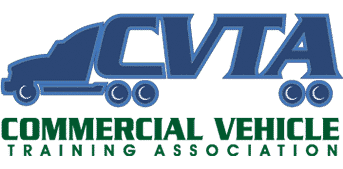Trucking is an essential part of our nation’s economy, and you’ll see semi-trucks on highways transporting freight at all hours of the day and night. Some types of trucking allow drivers to choose their own daily schedule, provided they can deliver their haul on time and follow all hours of service (HOS) regulations. Others may require more nighttime trucking based on the delivery windows. If you’re interested in becoming a trucker, it’s important to understand when night driving may be required and how to do this safely. It’s also helpful to understand your own preferences for daytime vs nighttime trucking so you can select a type of trucking that best matches your ideal schedule.
When Is Day vs Night Trucking More Common?
For over-the-road (OTR) dry van hauls, solo truckers generally get to choose their own driving schedule. You’ll still need to adhere to HOS rules and will have a delivery window or a specific delivery time you’ll need to arrive by. This type of driving is most flexible for whether you drive during the day or at night.
In trucking teams, drivers switch off to maximize miles while keeping both individuals within HOS limits. This means that one driver is usually behind the wheel during the day, whereas the other will spend more time driving at night. This may alternate depending on when hours are used up, or you may set a schedule so one of you is always driving at night or always driving during the day.
Due to their delivery requirements, refrigerated truckers (reefers) typically drive at night more often. The same is true for less-than-truckload (LTL) linehaul drivers, who transport freight between LTL terminals.
Local drivers who stay within a limited region most often travel during the day. However, there may be some local jobs that require nighttime driving.
Daytime Trucking
Pros
- This type of driving is more familiar to most people.
- It’s easier to stay safe and alert.
- You are working with your circadian rhythm, not against it, which makes getting quality sleep easier.
- You can enjoy the scenery while you drive.
- It’s easier to find parking for rest stops during your driving window (e.g. stopping for fuel or your required 30-minute break).
Cons
- There’s more traffic on the road, which can slow down your trip. This is especially significant if you are traveling near a city during rush hour.
- Construction zones are more likely to be active.
- Since many truckers prefer to drive during the day and stop to rest at night, truck stops can be crowded and finding parking for the night can be difficult. You may need to shut down earlier in the day and get up earlier in the morning to beat the crowds.
Nighttime Trucking
Pros
- There are fewer vehicles on the road, so traffic is less of a concern.
- Construction is not typically active at night.
- In some cases, it’s easier to find parking if you’re sleeping during the day.
Cons
- Drowsiness is more common and can be a safety issue.
- It’s harder to sleep during the day, especially at truck stops when more people may be moving around and making noise.
- It’s easier to get lost since landmarks or signs may be hard to see.
- Low visibility can increase the risk of getting into an accident.
The Bottom Line
At the end of the day, nighttime trucking is often riskier than daytime driving, but this may vary based on your personal experience and preferences. It’s up to you as a driver to be sure that you stay safe on the road. Choosing a career that includes more of the type of driving you prefer can help you reach your goals and feel more comfortable. At Phoenix Truck Driving School, we can help you earn your commercial driver’s license (CDL) and our job placement assistance team can work with you to explore your career options.



